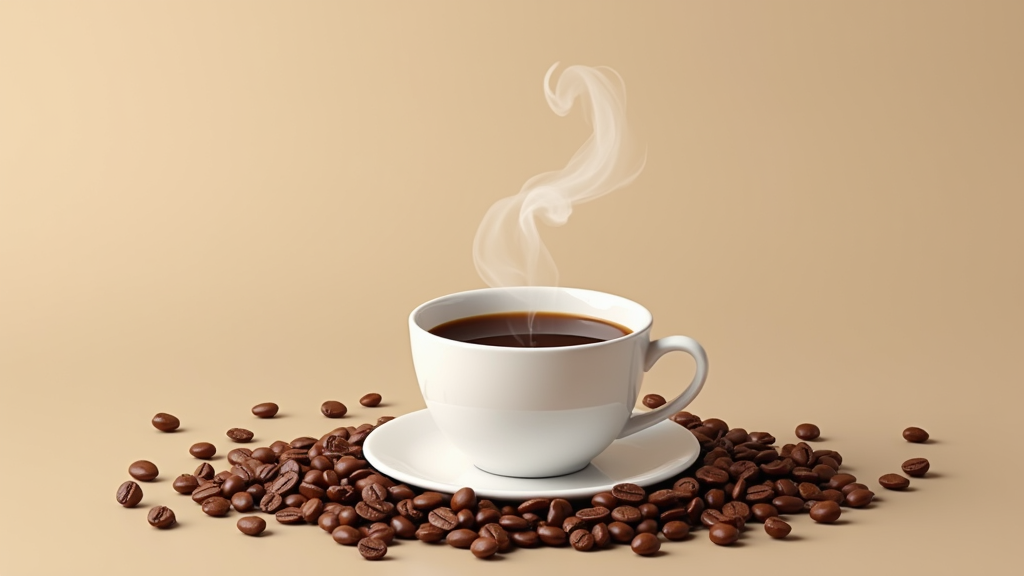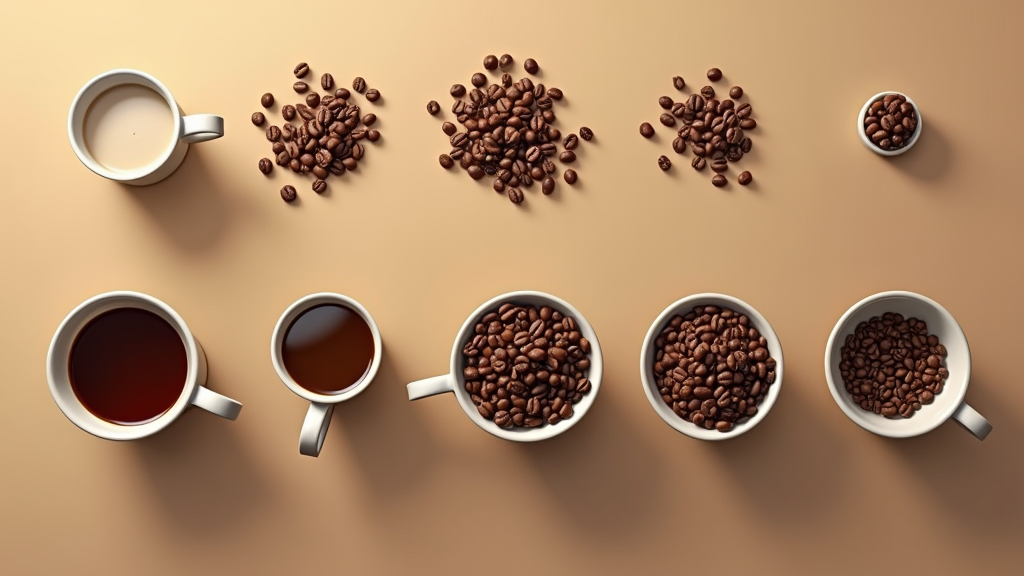Table of Contents
- Understanding How Much Coffee for 12 Cups
- Understanding Coffee Brewing: Ground Coffee to Water Ratio
- Key Elements for Brewing 12 Cups of Coffee
- Detailed Guide: Coffee to Water Ratio for 12 Cups
- Materials Needed for Brewing 12 Cups of Coffee
- Initial Setup for Brewing 12 Cups of Coffee
- Important Considerations for Best Coffee Brewing
- Step-by-Step: Brewing 12 Cups of Delicious Coffee
- Best Practices for Brewing Excellent Coffee
- Common Mistakes to Avoid When Brewing Coffee
- Expert Tips: Enhancing Your Coffee Brewing Skills
- Optimization Methods for Perfect Coffee Extraction
- Troubleshooting: Fixing Common Coffee Brewing Issues
Understanding How Much Coffee for 12 Cups

Importance of Precise Coffee to Water Ratio
Brewing the perfect 12-cup pot of coffee hinges on precision. A standard 12-cup coffee maker typically brews around 72 fluid ounces of coffee. Maintaining the ideal coffee-to-water ratio is crucial for achieving optimal taste, ensuring a consistently delicious and satisfying coffee experience while preventing weak, watery, or overly bitter brews.
Historical Context of Coffee Brewing Ratios
Coffee brewing has evolved significantly, transitioning from rudimentary methods to sophisticated techniques. The standardization of coffee-to-water ratios has played a pivotal role in enhancing brewing consistency over time. Recent developments, such as the Specialty Coffee Association (SCA) guidelines, offer precise recommendations, and the use of digital scales and accurate measuring tools further improves brewing accuracy.
Key Concepts for Brewing 12 Cups of Coffee
In this guide, you’ll learn about the core concepts essential for brewing a perfect 12-cup pot. This includes understanding the ideal coffee-to-water ratio and appreciating the importance of grind size and water quality. You’ll also discover practical applications, such as calculating the correct amount of ground coffee for a 12-cup pot and adjusting the ratio to suit your personal taste preferences.
Understanding Coffee Brewing: Ground Coffee to Water Ratio
Defining Coffee-to-Water Ratio and Extraction
Mastering the coffee-to-water ratio is key to controlling extraction and flavor. Aim for optimal extraction by observing your brew’s taste; a sour taste indicates under-extraction (use a finer grind or more coffee), while bitterness suggests over-extraction (use a coarser grind or less coffee).
The coffee-to-water ratio is the cornerstone of brewing delicious coffee. It represents the proportion of ground coffee to water, often expressed as a ratio (e.g., 1:16). Extraction, on the other hand, is the process of dissolving soluble compounds from the coffee grounds into the water. Mastering these concepts is crucial for achieving the perfect brew when making 12 cups of coffee.
Optimal extraction results in a balanced and flavorful cup, highlighting the coffee’s inherent characteristics. Under-extraction occurs when too little coffee solubles are dissolved, leading to a sour or weak taste. Conversely, over-extraction happens when too many solubles are dissolved, resulting in a bitter and astringent flavor.
Key Elements for Brewing 12 Cups of Coffee

Essential Components: Coffee, Water, and Equipment
To brew 12 cups of coffee, you’ll need a few essential components. Freshly ground coffee is paramount for optimal flavor. Filtered or purified water is crucial, as tap water can contain impurities that affect the taste. A coffee maker, whether it’s a drip machine, French press, or other method, is necessary. Finally, accurate measuring tools, such as a scoop or scale, ensure the correct coffee-to-water ratio is used.
Factors Influencing the Ideal Coffee Brew
Several factors influence the final flavor and strength of your 12-cup coffee batch. The type of coffee bean (Arabica, Robusta, or a blend) plays a significant role, as each variety has distinct flavor profiles. Grind size is equally important, as it affects the extraction rate; fine grinds are suitable for espresso, medium grinds for drip coffee, and coarse grinds for French press. Water temperature, ideally between 195°F and 205°F (90°C to 96°C), is crucial for proper extraction.
Secondary aspects to consider include water hardness, brewing time, and the freshness of the coffee beans. Different brewing methods require adjustments to the coffee-to-water ratio and grind size to achieve the best results. Ultimately, personal taste preferences will dictate the final adjustments needed to achieve your desired coffee strength.
Detailed Guide: Coffee to Water Ratio for 12 Cups
Materials Needed for Brewing 12 Cups of Coffee
To brew a perfect 12-cup pot of coffee, you’ll need a few essential materials:
- 72 fluid ounces (2136 grams or 2835 grams) of water.
- Digital scale (optional, but recommended for precision).
- Measuring spoons or standard coffee scoop (2 tablespoons).
- Freshly ground coffee beans.
Initial Setup for Brewing 12 Cups of Coffee
Before you start brewing, make sure everything is set up correctly:
- Ensure your coffee maker is clean and ready to use.
- Measure out 72 ounces of water and pour it into the coffee maker’s reservoir.
Important Considerations for Best Coffee Brewing
Keep these points in mind for the best-tasting coffee:
- Use filtered water to avoid impurities affecting the taste.
- Grind your coffee beans just before brewing for maximum freshness.
Step-by-Step: Brewing 12 Cups of Delicious Coffee
Follow these instructions for a perfect pot of coffee:
Best Practices for Brewing Excellent Coffee
Follow these guidelines for optimal results:
- Use a medium grind for drip coffee makers.
- Pre-wet the coffee grounds (blooming) for 30 seconds to release CO2.
- Ensure the water temperature is between 195°F and 205°F (90°C and 96°C).
Common Mistakes to Avoid When Brewing Coffee
Avoid these pitfalls for a better brewing experience:
- Using too little coffee, resulting in weak brew.
- Using too much coffee, resulting in bitter brew.
- Using stale coffee beans.
- Using tap water with high mineral content.
Expert Tips: Enhancing Your Coffee Brewing Skills
Take your coffee brewing to the next level with these tips:
- Experiment with different coffee bean origins to find your preferred flavor profile.
- Adjust the grind size based on the coffee bean type and brewing method.
- Consider using a burr grinder for a more consistent grind.
Optimization Methods for Perfect Coffee Extraction
Fine-tune your brewing process for the best possible flavor:
- Use a digital scale for precise coffee measurements.
- Monitor the brewing time to ensure optimal extraction (5-6 minutes for drip).
- Descaling your coffee maker regularly to remove mineral buildup.
Troubleshooting: Fixing Common Coffee Brewing Issues
Solve common coffee problems with these solutions:
- If the coffee is too weak, increase the amount of ground coffee.
- If the coffee is too bitter, decrease the amount of ground coffee or use a coarser grind.
- If the coffee tastes sour, ensure the water temperature is high enough.

